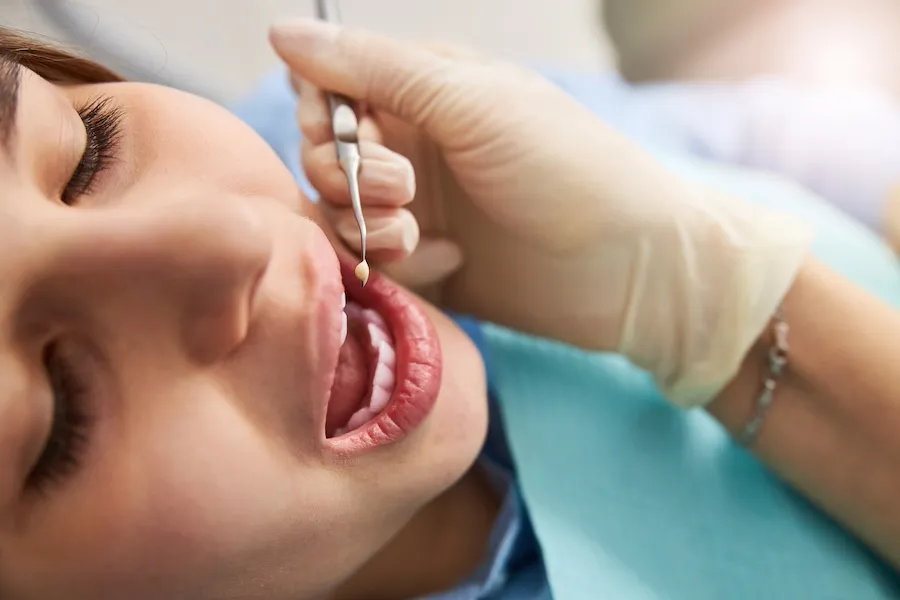
Provisional political agreement on banning the last residual uses of mercury in products in the EU
Provisional agreement to ban certain uses of mercury
A provisional political agreement has been reached between the European Parliament and the Council on the proposed revision of the regulation on mercury in dental amalgams and other products. With alternative solutions available, this regulatory revision will ban the last deliberate uses of mercury in the European Union. The planned ban on the use of dental amalgams from January 1, 2025 will apply to all individuals. In addition, the introduction of restrictions on the manufacture, import and export of certain mercury-containing lamps will help to ensure that Europeans are better protected against this toxic metal. This step forward is part of the EU's efforts to protect human health and the environment, in line with the EU's "zero pollution" ambition.
The role of the mercury agreement
The new legislation will play a crucial role in helping the EU and its Member States to meet their commitments under the European Green Market, the Chemicals Strategy for Sustainable Development, and the Zero Pollution Action Plan.
Under this legislation, member states will have to switch from the use of dental amalgams to mercury-free dental filling materials. At the same time, they will have to end the production and export of lamps containing added mercury, replacing them with mercury-free alternatives such as LEDs, which are also more energy-efficient. These measures are consistent with other relevant European legislation, including the Regulation on the Restriction of the Use of Certain Hazardous Substances (RoHS).
Background to the proposed ban on mercury uses
Revision of the European mercury regulation
As part of the Zero Pollution Action Plan, on July 14 the European Commission published its revision of the 2017 European Mercury Regulation. The purpose of the revision is to adopt the proposal to phase out mercury in dental amalgam and other residual products from 2025, with the aim of achieving a "mercury-free Europe".
The use of dental amalgams is the largest single use of mercury in the EU, with an estimated 40 tonnes in 2019. The Commission's aim is to ban this use from January 1, 2025 "except when the dental practitioner deems it strictly necessary in view of the patient's specific medical needs".
Delays in bans on certain uses of mercury
However, the revision has delayed the planned bans on the export of certain mercury-containing lamps, a measure that NGOs had urgently called for to help eradicate this extremely toxic metal from the environment.
_
Conclusion of the agreement
Voting results for the agreement on the EC proposal
Members of the ENVI parliamentary committee voted in favor of the political agreement reached between the European Parliament and the Council of Ministers in February, with 74 votes in favor, one against and three abstentions, paving the way for adoption of the amended regulation.
Dates to remember
The transition period provided for in the agreement is 18 months, ending on June 30, 2026 for EU member states.
The agreement reached on February 8 means that companies will be banned from producing, importing and exporting six other types of mercury-containing lamps, from December 31, 2025 or June 30, 2026, depending on the lamp category. The agreement also provides for a ban on exports of dental amalgams from January 1, 2025, and a ban on their manufacture or import into the EU from July 1, 2026.
The progressive ban on the use of mercury in dental amalgams and fluorescent lamps marks a significant step forward in the protection of human health and the environment. By adopting these measures, the EU is reinforcing its commitment to a circular economy and a more sustainable society, while paving the way for a global transition to a mercury-free future.
Need support to keep up to date with regulatory changes?
Contact an expert free of charge and without obligation for more information.
_
Provisional political agreement on banning the last residual uses of mercury in products in the EU
Provisional agreement to ban certain uses of mercury
A provisional political agreement has been reached between the European Parliament and the Council on the proposed revision of the regulation on mercury in dental amalgams and other products. With alternative solutions available, this regulatory revision will ban the last deliberate uses of mercury in the European Union. The planned ban on the use of dental amalgams from January 1, 2025 will apply to all individuals. In addition, the introduction of restrictions on the manufacture, import and export of certain mercury-containing lamps will help to ensure that Europeans are better protected against this toxic metal. This step forward is part of the EU's efforts to protect human health and the environment, in line with the EU's "zero pollution" ambition.
The role of the mercury agreement
The new legislation will play a crucial role in helping the EU and its Member States to meet their commitments under the European Green Market, the Chemicals Strategy for Sustainable Development, and the Zero Pollution Action Plan.
Under this legislation, member states will have to switch from the use of dental amalgams to mercury-free dental filling materials. At the same time, they will have to end the production and export of lamps containing added mercury, replacing them with mercury-free alternatives such as LEDs, which are also more energy-efficient. These measures are consistent with other relevant European legislation, including the Regulation on the Restriction of the Use of Certain Hazardous Substances (RoHS).
Background to the proposed ban on mercury uses
Revision of the European mercury regulation
As part of the Zero Pollution Action Plan, on July 14 the European Commission published its revision of the 2017 European Mercury Regulation. The purpose of the revision is to adopt the proposal to phase out mercury in dental amalgam and other residual products from 2025, with the aim of achieving a "mercury-free Europe".
The use of dental amalgams is the largest single use of mercury in the EU, with an estimated 40 tonnes in 2019. The Commission's aim is to ban this use from January 1, 2025 "except when the dental practitioner deems it strictly necessary in view of the patient's specific medical needs".
Delays in bans on certain uses of mercury
However, the revision has delayed the planned bans on the export of certain mercury-containing lamps, a measure that NGOs had urgently called for to help eradicate this extremely toxic metal from the environment.
_
Conclusion of the agreement
Voting results for the agreement on the EC proposal
Members of the ENVI parliamentary committee voted in favor of the political agreement reached between the European Parliament and the Council of Ministers in February, with 74 votes in favor, one against and three abstentions, paving the way for adoption of the amended regulation.
Dates to remember
The transition period provided for in the agreement is 18 months, ending on June 30, 2026 for EU member states.
The agreement reached on February 8 means that companies will be banned from producing, importing and exporting six other types of mercury-containing lamps, from December 31, 2025 or June 30, 2026, depending on the lamp category. The agreement also provides for a ban on exports of dental amalgams from January 1, 2025, and a ban on their manufacture or import into the EU from July 1, 2026.
The progressive ban on the use of mercury in dental amalgams and fluorescent lamps marks a significant step forward in the protection of human health and the environment. By adopting these measures, the EU is reinforcing its commitment to a circular economy and a more sustainable society, while paving the way for a global transition to a mercury-free future.
Need support to keep up to date with regulatory changes?
Contact an expert free of charge and without obligation for more information.
_







